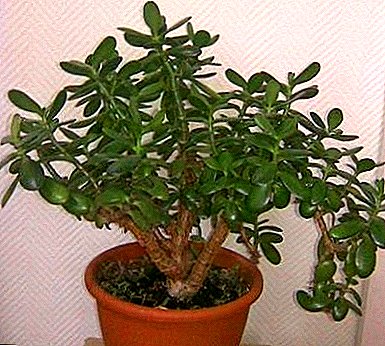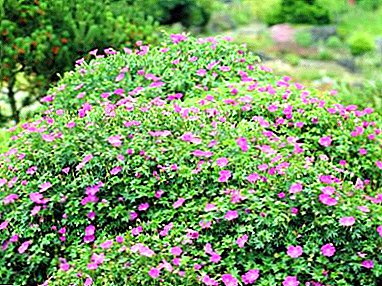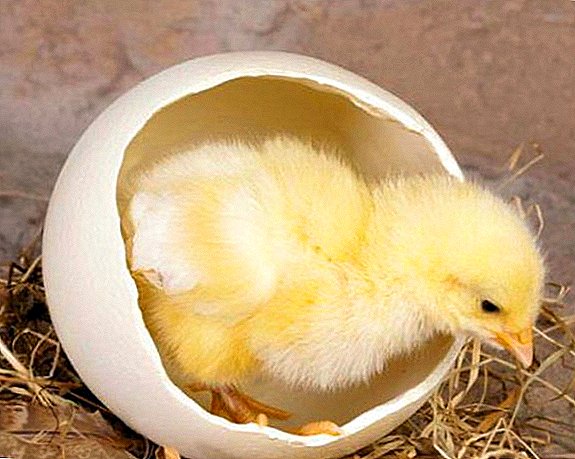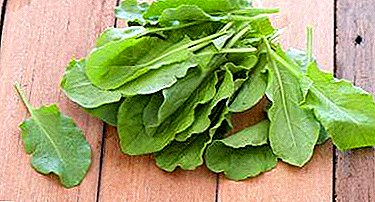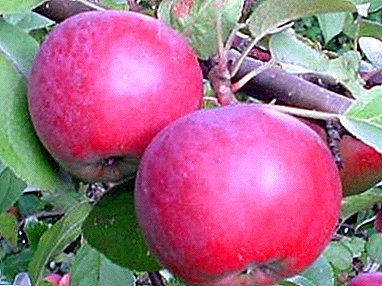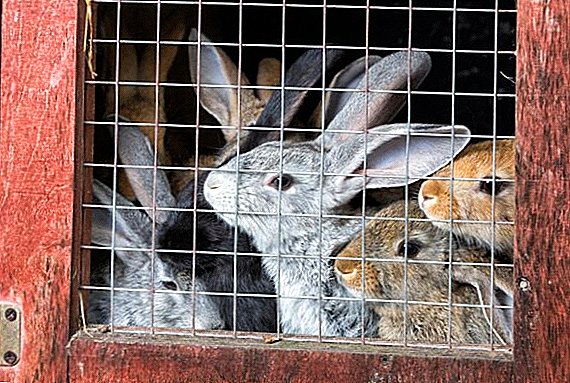 One of the key points in rabbit breeding is the proper arrangement of animal cages. The mistakes made in this matter can at least negatively affect the development and appearance of the animals, and even lead to the death of the entire livestock. Fortunately, there are several tested effective models of rabbit cages, which can be purchased in finished form or made with your own hands.
One of the key points in rabbit breeding is the proper arrangement of animal cages. The mistakes made in this matter can at least negatively affect the development and appearance of the animals, and even lead to the death of the entire livestock. Fortunately, there are several tested effective models of rabbit cages, which can be purchased in finished form or made with your own hands.
The advantages and differences of industrial cells from home-made designs
Comparing the industrial models of rabbit cells with independently designed and manufactured structures, we can note a number of advantages and differences of the first, namely:
- industrial cells, as a rule, are distinguished by a well-developed design that takes into account all the peculiarities of keeping animals (trays for litter, nests, feeders, etc.) and ensures the convenience of their operation;
- industrial constructions allow keeping the maximum number of animals even in relatively small rooms;
- the materials used to make industrial cells usually provide much greater durability than home-made structures, often made of not very suitable scrap materials.

Overview of industrial models
Consider some popular models of rabbit cages that can be used both in farming and households.
Important! There are cell models that can only be operated indoors, as well as outdoor models. In the latter case, these cells are necessarily covered with a canopy.
Construction "Okrol"
This model is not too suitable for a small household, but is well adapted for industrial breeding and fattening of rabbits.  Its features:
Its features:
- can only be operated indoors;
- in Okrol it is possible both to feed the young and to feed the breeding stock;
- two-tier design - on the upper tier of 16 compartments for young stock, on the lower tier - 12 compartments in which you can arrange queen cells or, if you wish, divide them into two partitions;
- the bottom of the feeders is perforated, which ensures screening of impurities from the feed, in addition, the design of the feeders does not allow animals to remove food from them;
- Steel elements, steel sheets and galvanized steel grating are used in the structural elements.
Did you know? It is believed that the breeding of rabbits for the first time engaged in the Roman Empire about 100 years BC. e. A new development of this branch of the economy was in the VII-X centuries in France, where rabbit breeding was actively engaged in monasteries.
"Practice FR-231"
This model is also quite roomy and is more often used in industrial rabbit breeding. The features of the FR-231 Practice are:
- operated indoors;
- it can be used for fattening youngsters or making queen cells;
- bunk construction - 12 compartments at the bottom, six compartments on top, additional internal partitions can be installed in them;
- the covers of the compartments are spring loaded;
- structural elements made of steel and galvanized iron.

Author's models
These models are more focused on households, and their design is better suited for self-production at home. Consider some good designs.
We advise you to get acquainted with different breeds of rabbits: white giant, gray giant, French ram, marder, Rex, Angora, black-brown, butterfly, Viennese blue, flandre, Soviet chinchilla.
Cells by the method of Zolotukhin
This type of cell is especially popular in households because of its simple design, low cost and practicality.
Video: Nikolay Zolotukhin and rabbit cages
It has the following characteristics:
- usually installed outdoors;
- can be one-, two- or three-tier;
- each higher tier is shifted 15-20 cm back compared to the lower;
- the floor is mostly solid, slightly tilted back, covered with a board or smooth slate, the rear is a mesh area of 15-20 cm wide;
- a permanent mother liquor is absent; if necessary, the nest is arranged in a darkened part of the cage on the floor;
- the feeding trough fastens to a frontal grid;
- It is made of inexpensive materials (board, metal mesh, fasteners).
Important! The construction of the floor in Zolotukhin’s cage (plank or slate with a narrow lattice area in the back) is due to the observation that in the overwhelming majority of cases, animals leave waste material in the back of the cage, where the grid is provided for their removal. This also contributes to a slight slope of the floor back.
Construction by Mikhailov method
This design is attractive to many rabbit breeders in that it allows them to give food and water to animals, as well as to clean the cage once every few days.
Video: Mikhailovskie rabbit cages Its features:
- installed in the open air, can be single- or bunk;
- there is a removable mother liquor and a compartment for deposited rabbits;
- Automatic watering and bunker feeders are provided, into which feed and water are loaded once or twice a week;
- there is a heated drinker in the winter and ventilation hood;
- There is a pyramid-shaped pan with a container for collecting feces.
We advise you to read about how to water the rabbits with water, what to not feed the rabbits with, what grass to feed the rabbits, what to eat and what to feed the rabbits in the winter.
Titarenko model
This modular design can be relatively compact or assembled from several modules into a mini-farm. Functionally in many respects similar to the previous design.
Video: Titarenko's modular rabbit cage It has the following characteristics:
- operated outdoors or indoors;
- can be two- or three-tier, with a base, adjacent and delivery level;
- the mother liquor can be internal or mounted;
- there is a pan with a container for collecting faeces;
- Winter-equipped automatic drinking bowl and bunker feeder;
- there is a ventilation pipe.
Construction Tsvetkov
The features of this device are as follows:
- operated outdoors;
- bunk construction, with two compartments on each tier;
- hinged queen cells;
- two conic pallets with tanks for collecting faeces;
- bunker feeders and automatic drinkers (water, if necessary, is heated by a boiler);
- ventilation system.
Video: Tsvetkov's mini-farm device
Model Ovdeenko
The design of the Ovdeenko cell is markedly different from the previous ones. In particular, the following features can be noted:
- this is a four-tier block of six cells for animals on each tier;
- under each cell there is a removable fecal tray;
- there are feeders and drinkers;
- the frontal part of the cage can be covered with common doors to protect against wind and precipitation;
- operated outdoors.

How to make a cage for rabbits using the Zolotukhin method with your own hands
Of all the above constructions, the Zolotukhin model is the most suitable for home manufacturing. For its production does not need serious experience and skills, as well as expensive materials. With all this, the model is practical and allows you to successfully breed rabbits.
Did you know? In the world about 200 breeds of domestic rabbits are bred. China is the world leader in breeding these animals (about half of world production), although rabbit breeding there began to develop only in the 1950s.
Design, dimensional drawings
There are no strict dimensions of this model. Consider the basic two-tier version of the cell. The following dimensions are recommended for it (they can be adjusted for the specific features of the farm):
- width - 200 cm;
- height - 150 cm;
- distance from the door to the back wall (depth) - 80 cm;
- floor slope - 5-6 cm;
- door - 40x40 cm (or the general door on two tiers);
- the area of the mother liquor - 40x40 cm;
- the height of the door of the mother liquor - 15 cm;
- the height of the frontal wall of the mother liquor - 16-17 cm;
- the height of the back wall of the mother liquor - 27-28 cm

Materials and tools
For the manufacture of this design will need the following materials:
- board 18-20 mm thick;
- wooden bars 50x50 mm;
- slate for a floor and a roof (slate for a floor can be replaced by a board);
- metal mesh for doors and rear of the floor;
- plywood for queen doors;
- polycarbonate for the back wall (this material is desirable, because it will drain feces from the upper cell, but it is not subject to rotting);
- tin;
- various fasteners.
- hacksaw for wood;
- hammer;
- drill;
- roulette.
Learn more about the organization of the dwelling for the rabbit: the selection and construction of the cage, the manufacture of feeders (bunker) and drinking bowls.
Step-by-step instruction
To make a rabbit cage of Zolotukhin's construction, it is necessary to perform the following actions:
- From the bars we make a framework with a width of 2 meters, a height of 1.5 meters and a depth of 90 cm. In order to impart rigidity, we strengthen it with crossbars. The lower tier should be 50 cm from the ground.
- We make overlapping tiers of slate (we withstand the slope of the floor, do not completely cover the floor).
- The back of the floor is covered with metal mesh.
- The bar we divide the tiers into two parts. The space between the bars will be a sennik.
- Making the back wall tiers of polycarbonate. On the lower tier, it is desirable to make a wall with a slight slope, so that it is easier for the feces to flow down along it.
- From the bar and the grid we mount the doors, install door hinges and heck. Doors for queen cells should not let light through.
- In the mother liquor, a barrier is established from the board to prevent the baby rabbits from falling out.
- The inner corners of the timber are upholstered with tin (this step can be performed in advance) so that the animals do not gnaw them.
- Make the side walls, set the feeders.
- Mount the canopy over the cage.
Video: rabbit cage from Zolotukhin - do it yourself
In the process of manufacturing and installation of tilting type feeders the following points are taken into account:
- the front, the bottom and the sloping back are formed from boards, the length of which corresponds to the dimensions of the cell door;
- the side parts are made of the same board, they are given a trapezoidal shape;
- the inside of the feeder is covered with tin;
- the feeder is mounted on the door, for mounting the nails are driven into the door through the holes drilled in the sides of the feeder;
- the feeder must be blocked by a metal grid that does not reach its bottom.
As you can see, there are many designs of rabbit cages, suitable both for farming and for private farmsteads. These already tested cell models compare favorably with various kinds of improvisations by the well thought-out design. Some models are very simple and suitable for manufacturing at home, even by low-skilled people.



